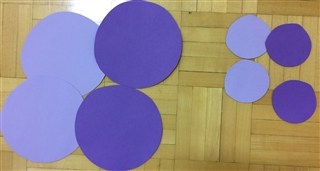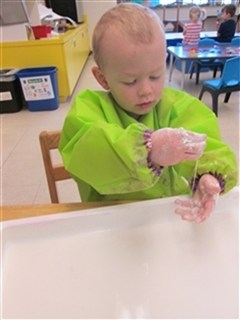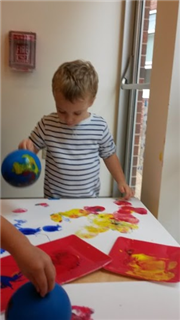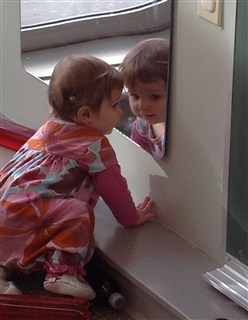Materials:
1 magnet on a string tied to a short rod or pencil (fishing pole)
Paper clips
Directions:
On a fish shape, write an upper case letter (A). On another one, write the same letter in lower case (a). Continue writing different upper and lower case letters on all the fish shapes. Place a paper clip on the mouth of each fish and put the fish in a “pool” on the floor. Using the magnetic fishing pole, invite your child to go fishing. As fish are pulled out, encourage your child to name each letter and match the upper case letter with each lower case letter. Continue until all the fish have been caught.
Variations:
For toddlers:
Color Sorting: Cut out fish shapes in a variety of colors. Children group fish by the different colors.
Letter or Numeral Matching: Match upper case letter to upper case letter (A-A) or numeral to numeral (1-1).
For preschoolers
Alphabetical Order: Write a letter of the alphabet on each fish shape, using either all upper case letters or lower case letters. As child goes fishing, he places the letters in alphabetical order.
Numerical Order: Write numerals 1-10 or 1-20 on the different fish. As the child catches each fish, she places them in numerical order (1,2,3,4,5, etc.)
Numerals/Dots: Write numerals 1-10 on fish shapes and draw one dot up to ten dots on each fish. Child matches the numeral with the corresponding number of dots.
Opposite Concepts: Write words that are opposites on the different fish shapes (e.g. big, little; hot, cold; fast, slow). Child matches opposite pairs.
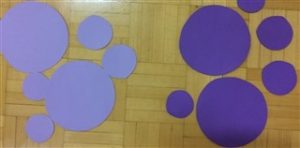 Purple construction paper (light and dark colors)
Purple construction paper (light and dark colors) Invite your child to sort the circles into two groups: big and little
Invite your child to sort the circles into two groups: big and little
